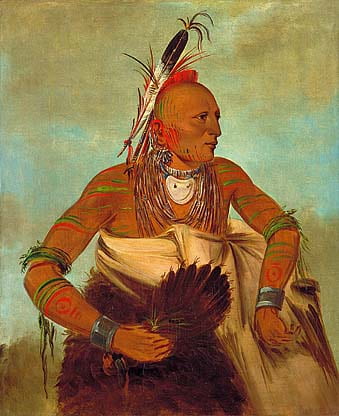Many experts dismiss the view that Native Americans consciously utilized their environment in a way that was sustainable. Such experts claim that the Native Americans were sustainable because of their situation (low population, low demand, limited technology). However, Bruce D. Smith argues that Native Americans used premeditated conservation measures such as niche construction to live sustainably. In addition, the 3 main protein sources they ate were conveniently very resilient to human predation (Smith).

The white tail deer, one of the protein sourcs for Natives, has a high reproductive rate and an amazing ability to adapt to different environments. Also the niche construction that Native Americans did, such as burning forests, actually helped improve the efficiency of white tail deer because of their diet, which consists of smaller plants and shrubs that were able to grow in places where forest had been cleared. Also the white tail deer adapted to human hunting patterns as they would go into a reclusive state, hiding and cautiously eating at night (Smith).

Fish in the Mississippi, specifically bottom feeders, were also a big source of protein for Native Americans. Due to the large amount of energy needed to catch fish in deep water, as well as the low yield with the technology of the time, fish were caught mainly in shallow pools or ponds that had been cut off after the flood waters receded. Most of the time these pools were spawning waters of the fish. This made it very easy for humans to collect fish in large numbers. The flow pattern of the rivers helped the breeding fish population to avoid human harvesting. Furthermore, the fish that were in these ponds would have likely died anyways, so the human collection of them did nothing to impact the natural selection and population health (Smith).
Waterfowl were the third source of protein and migrated from the tundra up north down to the southern Mississippi Valley. Since these birds migrated away from their breeding grounds, the Native Americans that hunted them were never in contact with their breeding grounds, thus ensuring that the population would survive. Also the number of waterfowl was so large that human hunting at the time would have had very little impact on the amount of birds that migrated back north to breed (Smith).

Large orchards of fruit and seed plants were placed in close proximity to Native American settlements to ensure a nearby food source. Also large nut trees like oak were scattered in parcels of forest on the outer areas of a settlement. This acted as not only a gathering food source but also a hunting ground as well as a natural border for the settlement. This sort of niche construction is evidence that Natives altered their environment to live more efficiently and sustainably (Smith).
It seems that the environments Smith talked about were plush with resources and there was plenty to go around. This is probably the reason warfare between different settlements and tribes was scarce in comparison to desert tribes like the Apache or Comanche. Without competition for resources, groups of people can live in relative harmony and peace. This environmental issue is sometimes overlooked in its relation to war and conflict.
References:
Smith, Bruce D. “Resource Resilience, Human Niche Construction, and the Long-Term Sustainability of Pre-Columbian Subsistence Economies in the Mississippi River Valley Corridor.” Journal of Ethnobiology 29.2 (2009) : 167-183. Web.
Images from Wikipedia and are freely licensed media